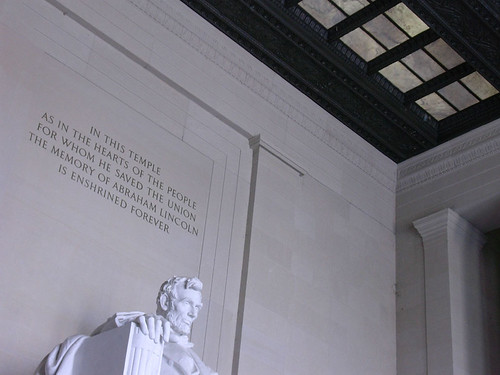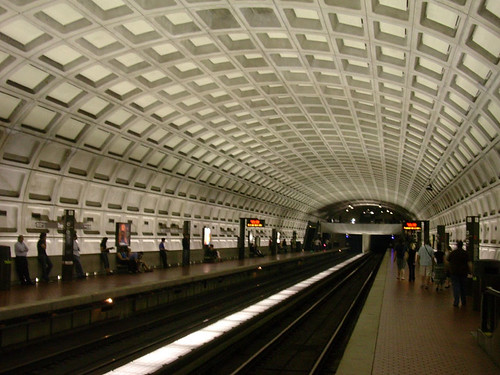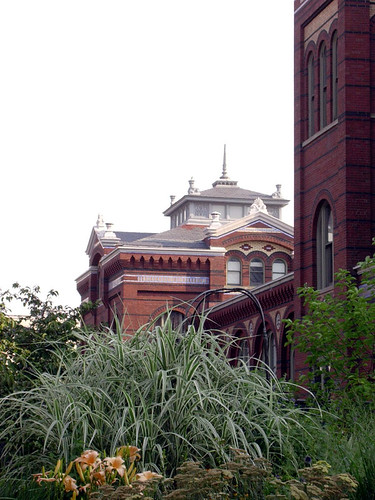
1. Aircraft
With the Ronald Reagan Washington National Airport located a couple miles south of the Mall on the Potomac's western edge, commercial planes are an almost constant presence. On the three days I was in D.C. planes took off to the north and west, flying low over the Jefferson Memorial (above), the western edge of the mall, and Arlington Cemetery. These three areas are home to monuments, places of remembrance and reverence, so I was surprised to almost always have the sound of engines overhead, be it planes or helicopters.

2. Inscriptions
Much of the Mall is devoted to memorials -- to people, to events -- making remembering an important part of one's visit to the capital. One of the most popular ways of getting people to remember is inscribed text, and it is impossible to move about the Mall and nearby streets without seeing words inscribed on something, be it a building, a sidewalk, a fountain. For me the plethora of inscriptions makes them less effective, as reading one after the other -- all in basically the same patriotic vein -- gets a bit old after a while. The Vietnam Veteran's Memorial Wall by Maya Lin is one of the most effective, though, as the names inscribed in granite are personal (many times touched and rubbed), rather than abstract ideas in verse. One of the more creative means of inscription is on the roof of Weiss and Manfredi's Women's Memorial at Arlington National Cemetery, where the glass is etched and then cast as shadows on the wall or floor below when the sun is overhead.

3. Grand Streets = Grand Metro
The streets in D.C. are extremely wide, helping to give the place its monumentality and scale that makes people feel small in the face of the government. One thing these wide streets enable are similarly grand underground stations for the Metro. Unlike many of the stations in New York that are constrained by not only street widths but other service snaking their way underground, the D.C. stations are beautifully spacious, aided by dramatic, indirect lighting illuminating the concrete vaults. Interestingly, the light levels are lower in D.C. than New York, though the feeling of security is greater, achieved via the large, open spaces.

4. Micro-climates
Walking the Mall and nearby streets in 98-degree heat, one notices the pockets of cool that occur in places of respite from the abundance of concrete and stone. Even the "green" of the Mall is so open and shade-free that it's anything but cool. But places like the Ripley Garden (above) or the Canadian Chancery are refreshing places with noticeably cooler temperatures. These two places are, respetively, good arguments for well-planned green space and site planning that allows air movement.
5. Paths and Crossings
The fifth observation is a bit of a stretch and is unfortunately without an explanatory image. Walking from point A to point B in an around the mall means following paths. In many cases these paths are parallel, but being able to cross from one to the other is close to impossible. In some cases, like near the FDR Memorial, this meant you were either walking along a road or along the water; fencing precluded switching paths that were maybe 30 feet apart. While this oft-repeated situation was only frustrating a few times, it illustrates a certain level of control over the public's movements. Sure, one could hop the fence to "change lanes" as it were, though that's something I neither tried nor saw. Coupled with the ubiquitous surveillance and security of the place, this restriction on movement seems to be another element in the ongoing redefinition of public space.
No comments:
Post a Comment